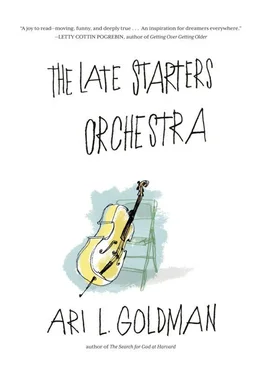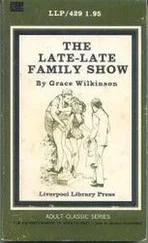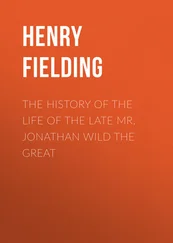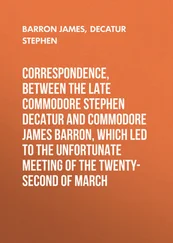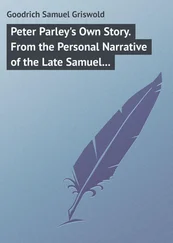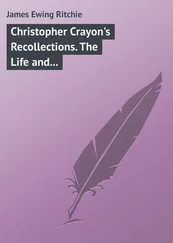I soon realized that no clairvoyance was involved here. It was just a New York City bus driver with a big personality. “God bless you!” he sang out when someone sneezed. “How was the shopping expedition?” he asked one woman with a lot of shopping bags. “Make way for the twins!” he exclaimed when a large pregnant woman boarded. I took a seat in the back of the bus and marveled at the exuberant mood he was able to create.
The driver was so busy with everyone else, I figured he’d forgotten about me. When he called out, “Ninety-sixth Street. Change here for the Number 1 train and for the M96 crosstown bus. Free transfer!” I quietly crept to the exit. But then he caught sight of me in the rearview mirror. “Bye, Elvis!” he shouted.
I was on the road to recovery. I could actually sit in a chair with my cello again without feeling pain in my back and my arms. That was a big step. My playing, on the other hand, sounded much like it did before: competent at moments, but inconsistent. I felt that I had endured the pain Mr. J promised, but I had not yet found the beauty. I was no more ready for my birthday performance than for the Tour de France. I needed to do something drastic — and fast. I remembered how the ELLSO summer program worked wonders for Elena and Andrea, the LSO founders, so I thought it might just be the thing I needed to move me up the musical ladder.
How to present this to Shira, though? She had recently balked at my spending Sunday afternoons drinking with my LSO friends after rehearsals. And, as she noted at the RTO concert, not all of them were wizened old grandmothers. The only way to pull this off, I figured, was to present it as a joint venture. ELLSO, I learned, also offered arts classes at its summer program. There would be painting, fine arts, dance, and movement and Shira would be welcome to participate. As it turned out, it wasn’t a tough sell at all. Shira loved the idea. In the back of my mind, I was hoping that, after a week at ELLSO, she would have to admit that classical music was the superior art form.
We were headed to Yorkshire, in the north of England, so we flew to Manchester and spent a weekend there before continuing to the summer retreat. Manchester, which has the reputation of being the gritty industrial capital of England, has been transformed in recent decades into a clean and vibrant cultural center. The city was in the midst of a huge jazz festival — with mostly amateur groups — at a half dozen outdoor locations throughout the city. We took in the sights of the city, its museums, cathedrals, and libraries, while sampling some extraordinary jazz, most of it in outdoor venues and almost all of it free of charge. We’d stop, have a beer, listen to music, and then be on our way to the next stop. On Saturday night, we managed to score tickets to a concert of opera favorites at the city’s new concert venue, Bridgewater Hall. While the soloists were professionals, the orchestra and the hundred-member chorus were there for the love of it. Amateurs all.
On Sunday morning we made our way by British Rail to Doncaster, an economically depressed town in Yorkshire that was surrounded by green fields, modest country cottages, and farmhouses. The ELLSO summer program was held on the outskirts of town, on a rustic college campus complete with a golf course, sheep, pigs, and a view of wheat fields that seemed to go on forever. Perhaps best of all (from my perspective) was that, with the students gone and the Wi-Fi shut off, we couldn’t connect to the Internet without going into town.
Shira, who had brought along work, initially wasn’t happy but soon she also felt liberated by our cyber isolation. She relaxed. As for me, I could at last concentrate on my music without interruption. Shira and I took advantage of the relatively swanky accommodations in the campus guesthouse, but most of the other ELLSO participants stayed in the dorms, with toilets down the hall and shared kitchen facilities. Still others brought sleeping bags and camped out on the college grounds.
The people who came were not wealthy and not especially talented. What they were was devoted. ELLSO offered them something rarely found: a complete escape from life, a chance to let go of the world and dive full force into music. Music camps of this intensity are generally reserved for children or for professionals.
While I expected proper classical music — essentially eighteenth- and nineteenth-century fare — ELLSO takes pride in being musically democratic, modern, and diverse. In addition to the classical repertoire, there was jazz, contemporary music, and a wide-ranging category lumped under the title of “Gypsy, Balkan, and Klezmer Music.” Many who played Bach and Beethoven during the day gathered around a campfire at night and experimented with music of quite a different sort. Shira signed up for classes in art, performance, and dance.
Most of the participants were British, but the program also drew amateur musicians from Finland, Ireland, and Belgium. Shira and I were among a small handful of Americans who came for the week of music. The participants ranged in age from thirty to almost ninety. And everyone had a story.
One of the first people to catch my eye at our very first ELLSO orchestra rehearsal was a cellist named Aaron, who was seventy-one and a retired nuclear engineer from Dorset. Aaron stood out because he played cello backward, that is, he bowed with his left hand and fingered with his right.
You sometimes see left-handed guitarists do something similar. And there are some famous lefty guitarists and electric bass players, like Paul McCartney, Jimi Hendrix, and Kurt Cobain. They are easy to spot because their guitars point in one direction while everyone else’s point the other way. Guitarists who play like this usually reverse the strings so that the low strings are on the top and the high on the bottom.
Left-handed violinists, cellists, and double bassists, though, have to adjust to the right-handed way — or find another instrument. The reason is simple. While rock musicians can stand helter-skelter with their instruments pointing every which way, classical musicians must have more discipline. They sit primly on stage, grouped by instruments. Imagine a right-handed violinist trying to share a stand with a left-handed violinist. There’d be more collisions than music. Not only must they face the same way, their bows must rise and fall together. There are even notations in the music that indicate “bow direction.” Being in an orchestra has some of the elements of being in the army. We march in lockstep, Mr. J would say. Uniformity is prized. Being part of an orchestra means playing by the rules.
But Aaron marched to his own percussionist. Not only did he reverse hands but he kept the right-handed stringing. How did this come about? “Years ago my daughter was taking cello lessons,” Aaron told me over lunch one day. “I just had to try it. I couldn’t very well reverse the strings — she was playing after all — but I also couldn’t adjust to playing it the right-handed way. So I just switched my hands.”
That was almost twenty-five years ago. Aaron picked up the cello again three years ago — in the way he knew best — with the bow in his left hand. “This is really the superior way to play,” Aaron said with a smile as he demonstrated with his cello. “This way the A string is more accessible. Why reach for it all the time?” He spoke with such enthusiasm that it was almost as if he made a discovery that Pablo Casals should have figured out.
Aaron acknowledges that his playing is unconventional. “My teachers have had to adjust,” he said.
“And what about your daughter, who got you started?” I asked Aaron.
Читать дальше
